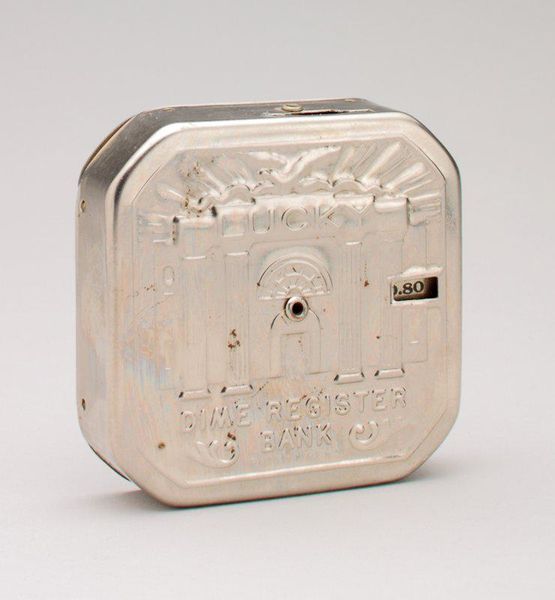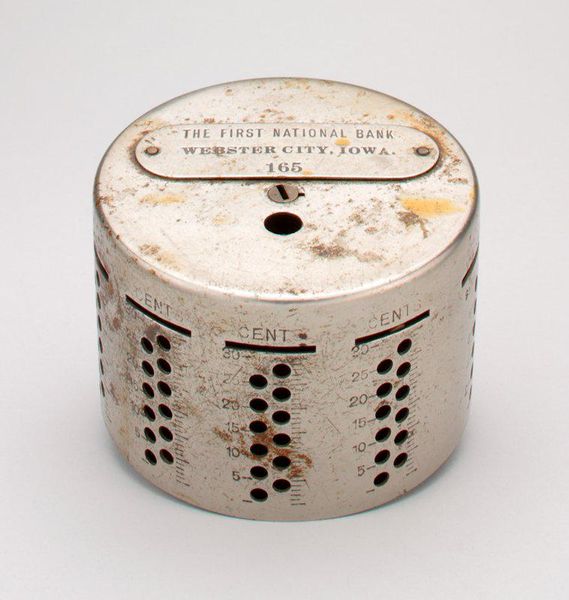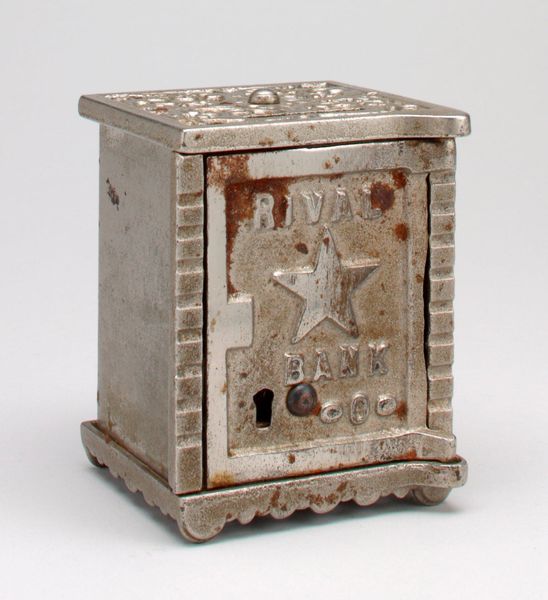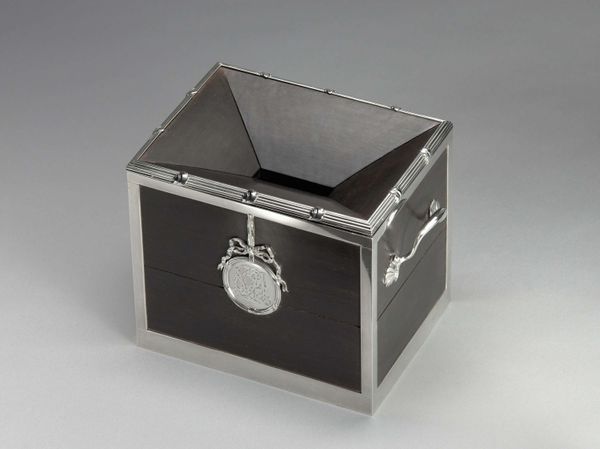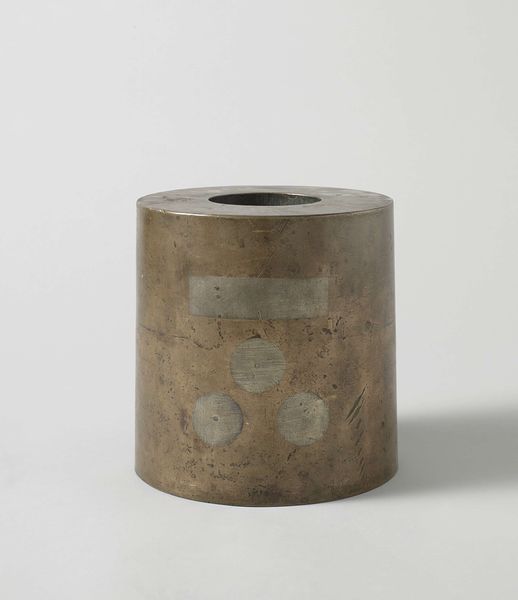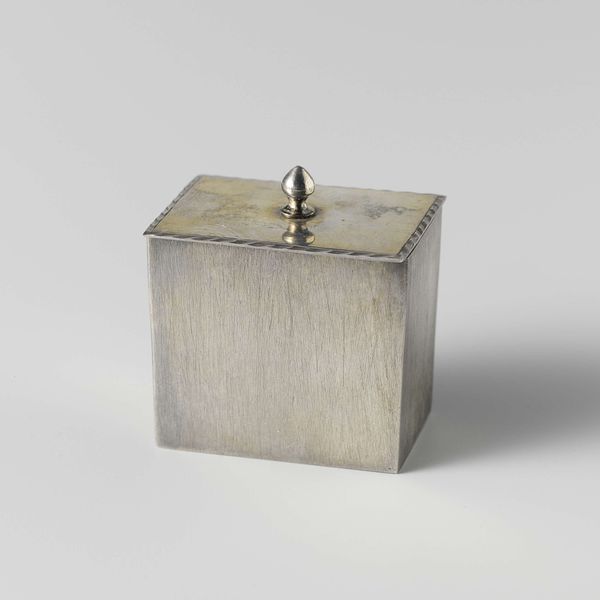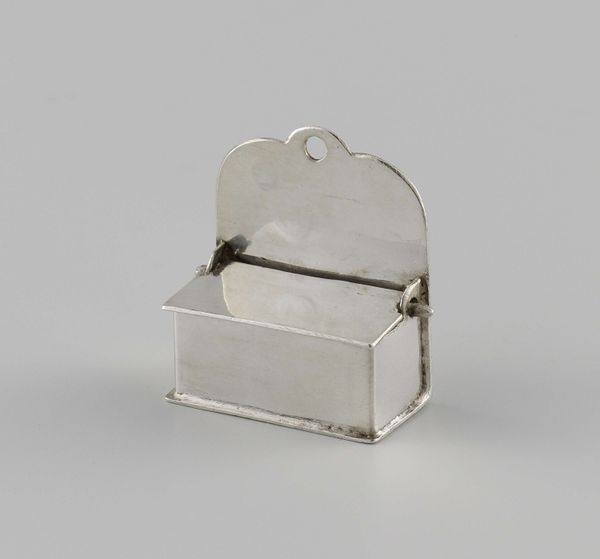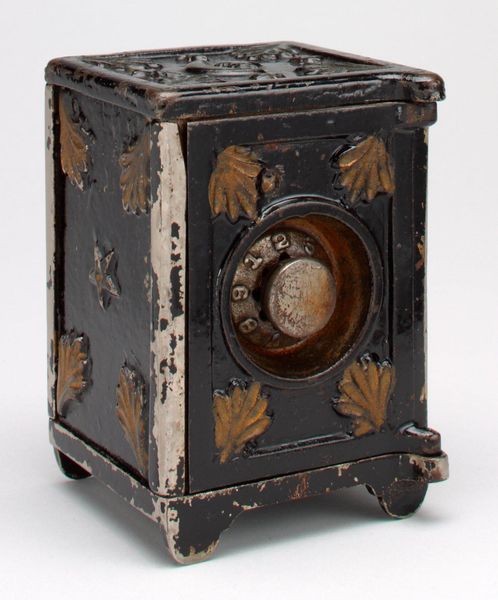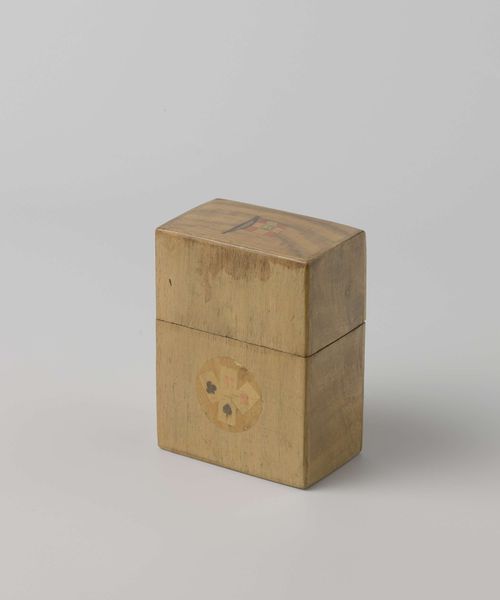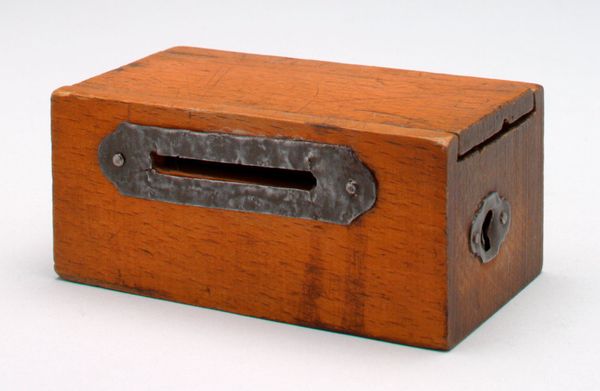
-Capitol Dime Register Bank (registering)- still bank c. 1940 - 1950
0:00
0:00
assemblage, metal, found-object
#
assemblage
#
metal
#
found-object
#
united-states
#
product photography
#
decorative-art
Dimensions: 2 9/16 x 2 9/16 x 5/8 in. (6.51 x 6.51 x 1.59 cm)
Copyright: No Known Copyright
Editor: So, this is the “Capitol Dime Register Bank,” a still bank made from metal and found objects, dating from around 1940 to 1950. It’s a curious little thing. The wear and tear gives it a sense of history, almost nostalgia. I'm interested in what you make of it from a historical perspective. What do you see in this piece? Curator: Well, immediately, I see a commentary on American values, particularly during the mid-20th century. The Capitol building, a symbol of democracy and national stability, is literally being used to house and "register" savings, even something as small as dimes. This elevates personal finance to a patriotic act. Consider the post-war emphasis on economic prosperity and the rise of consumer culture – owning a home, saving for the future. This object reflects that era’s preoccupation with financial security and the institutions, like banks, that fostered it. Does this object normalize financial institutions? Editor: That's interesting. It suggests that saving money wasn't just about personal gain, but about contributing to the national ideal. So, this little bank, likely found in many homes, played a small part in shaping those societal values? Curator: Exactly! The fact that it’s made from relatively inexpensive metal and possibly mass-produced suggests that it was intended for a wide audience. The idea of ‘registering’ – quantifying – wealth connects with the broader development of accounting, quantification, and statistics that underpinned the growth of large-scale bureaucratic and financial organizations. The state itself registers! Editor: So, in that context, its humbleness as an everyday object actually makes it a powerful cultural artifact. Curator: Precisely. What seems like a simple child’s bank reveals deeper connections between personal habits, national identity, and the growth of a modern financial system. How does seeing it in this new light change your perception? Editor: I initially saw a nostalgic object, but now I recognize its significance as a subtle piece of propaganda, reflecting and reinforcing the social and political values of its time. Fascinating.
Comments
No comments
Be the first to comment and join the conversation on the ultimate creative platform.
